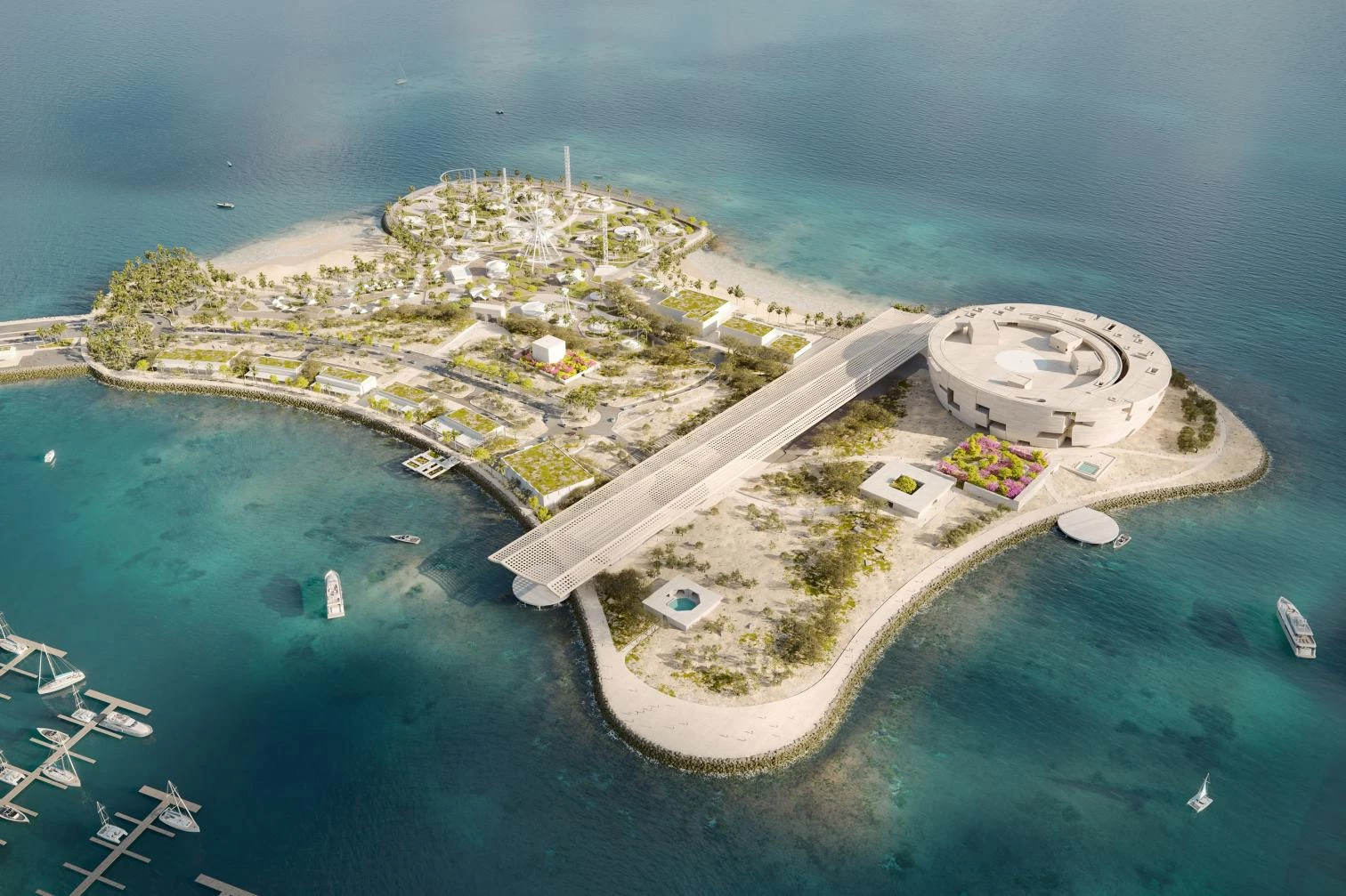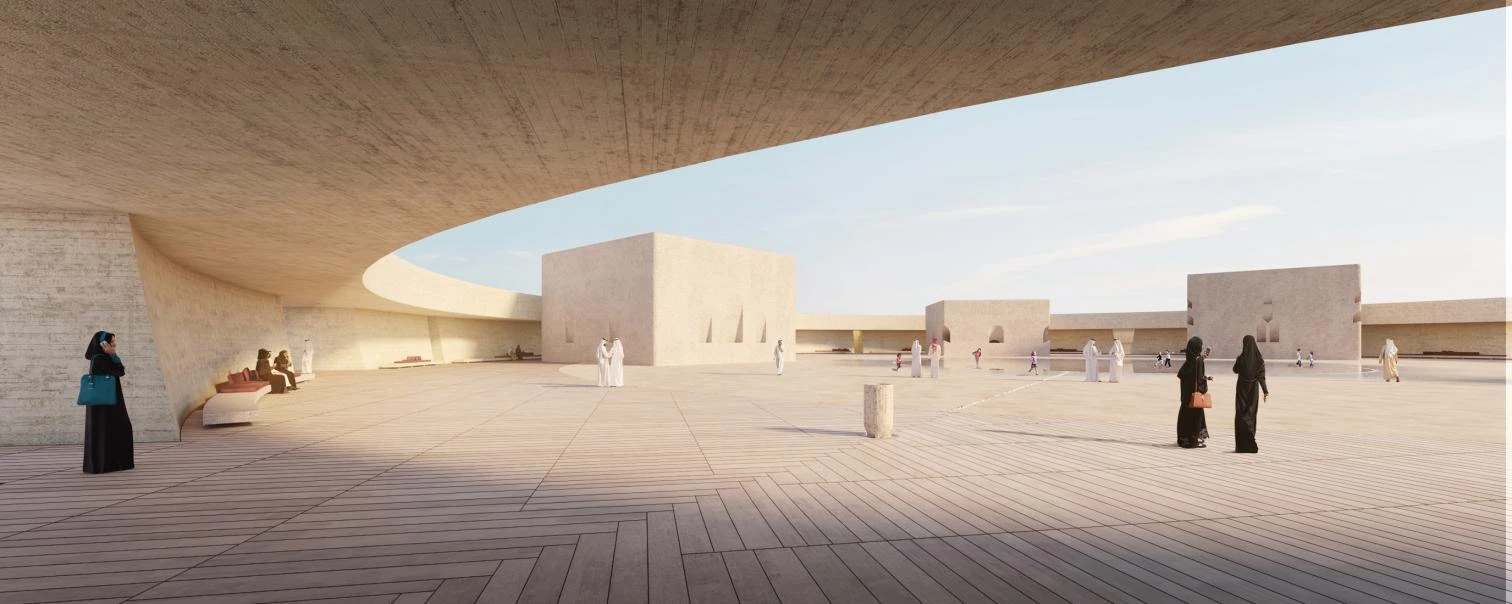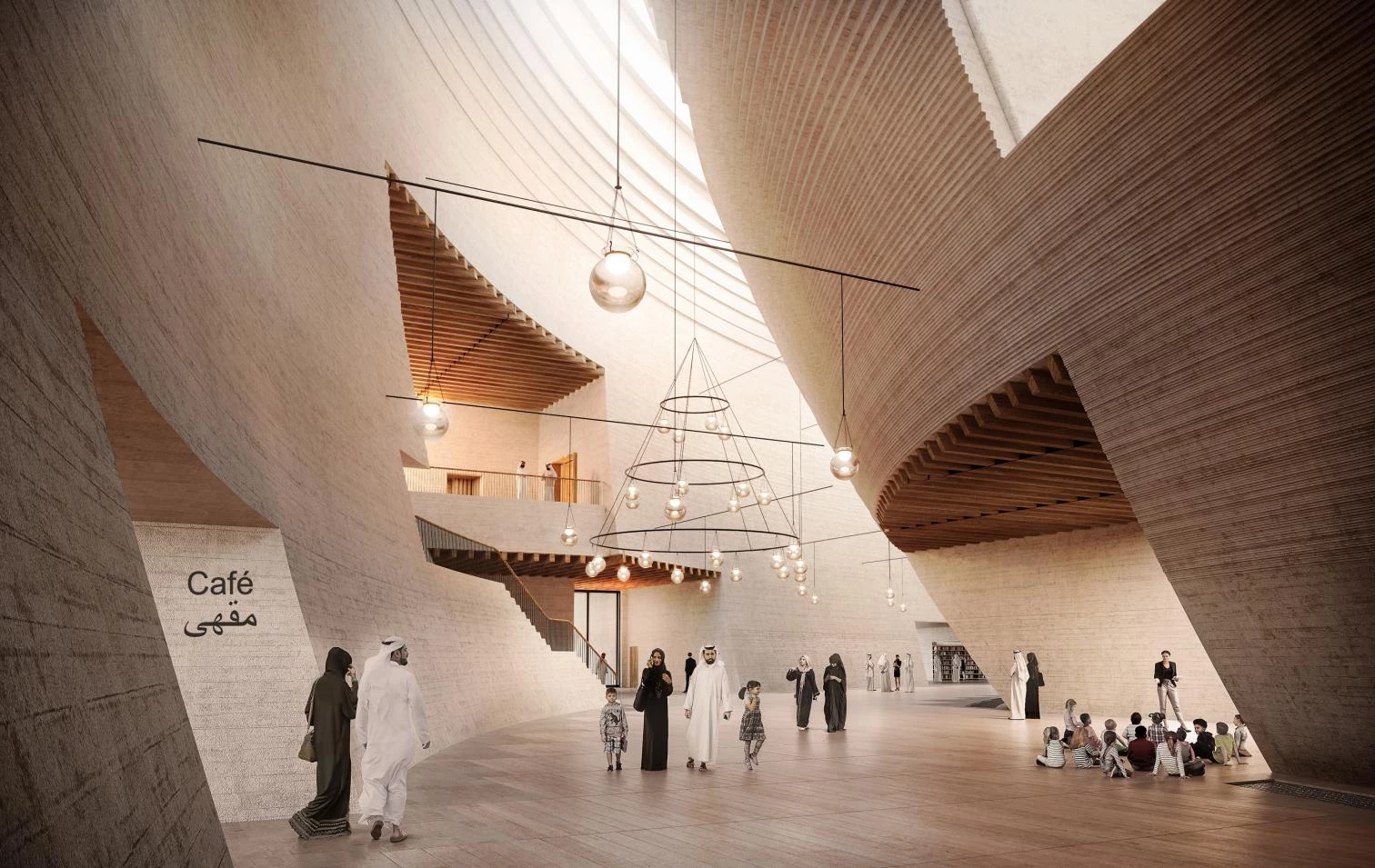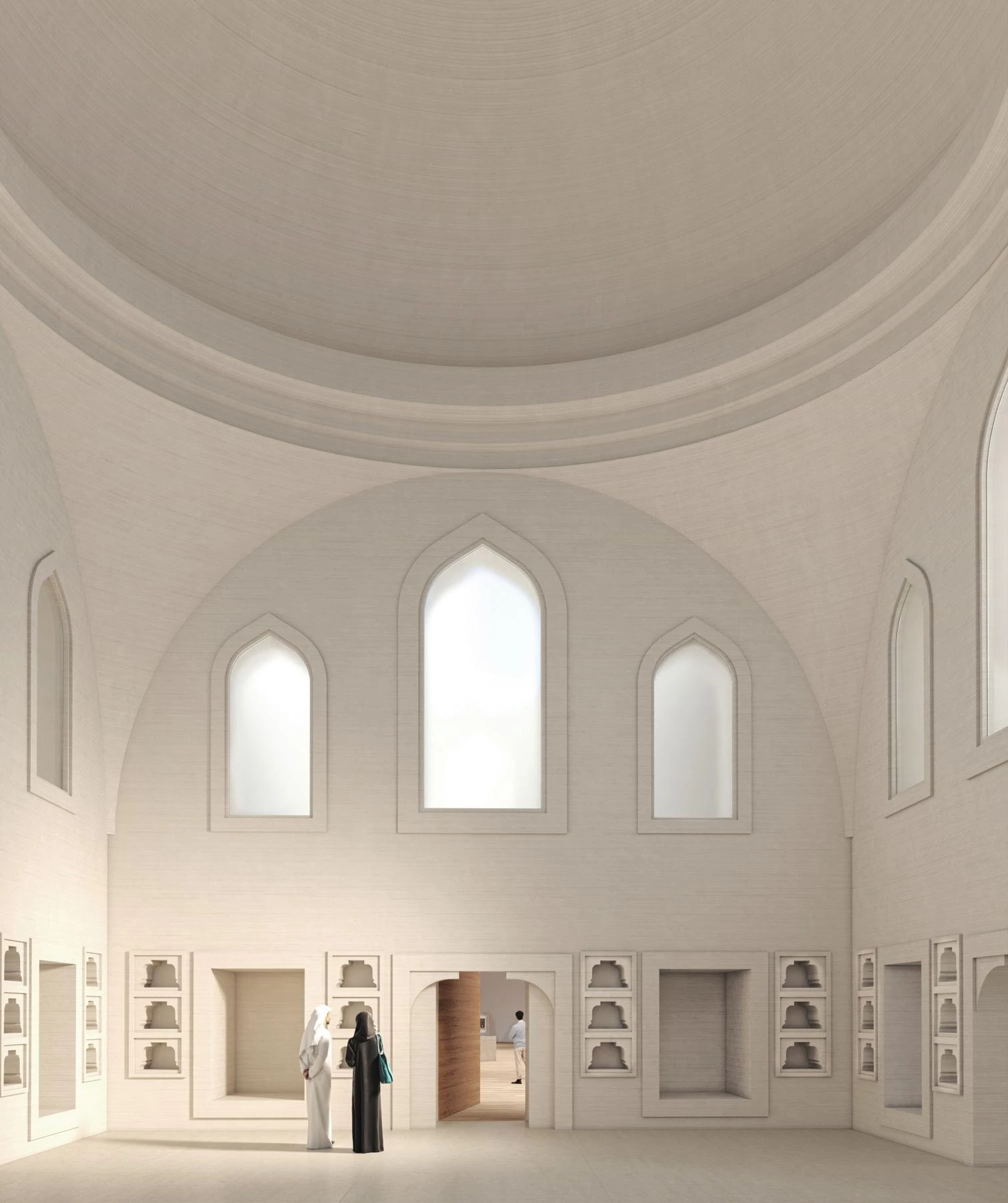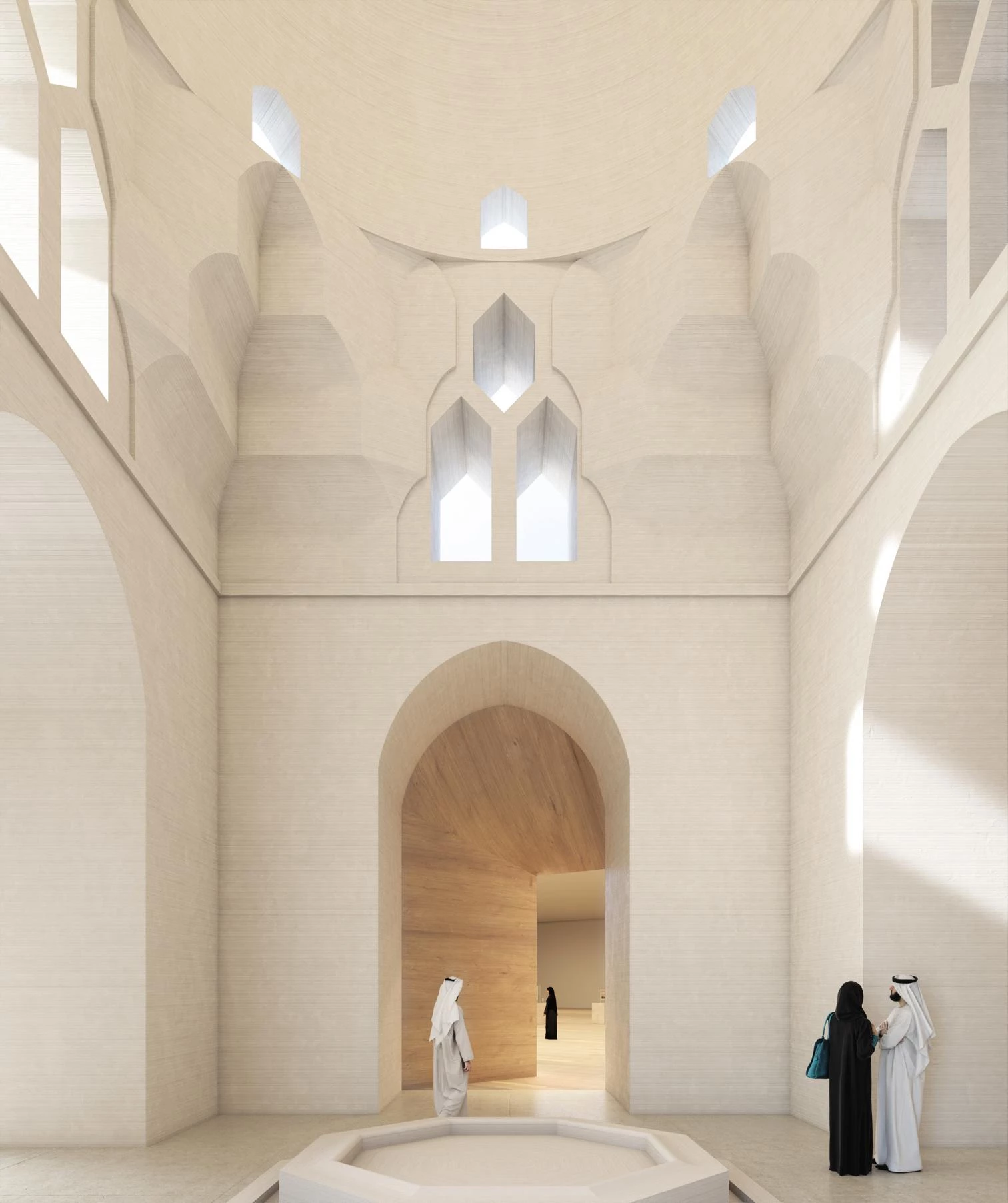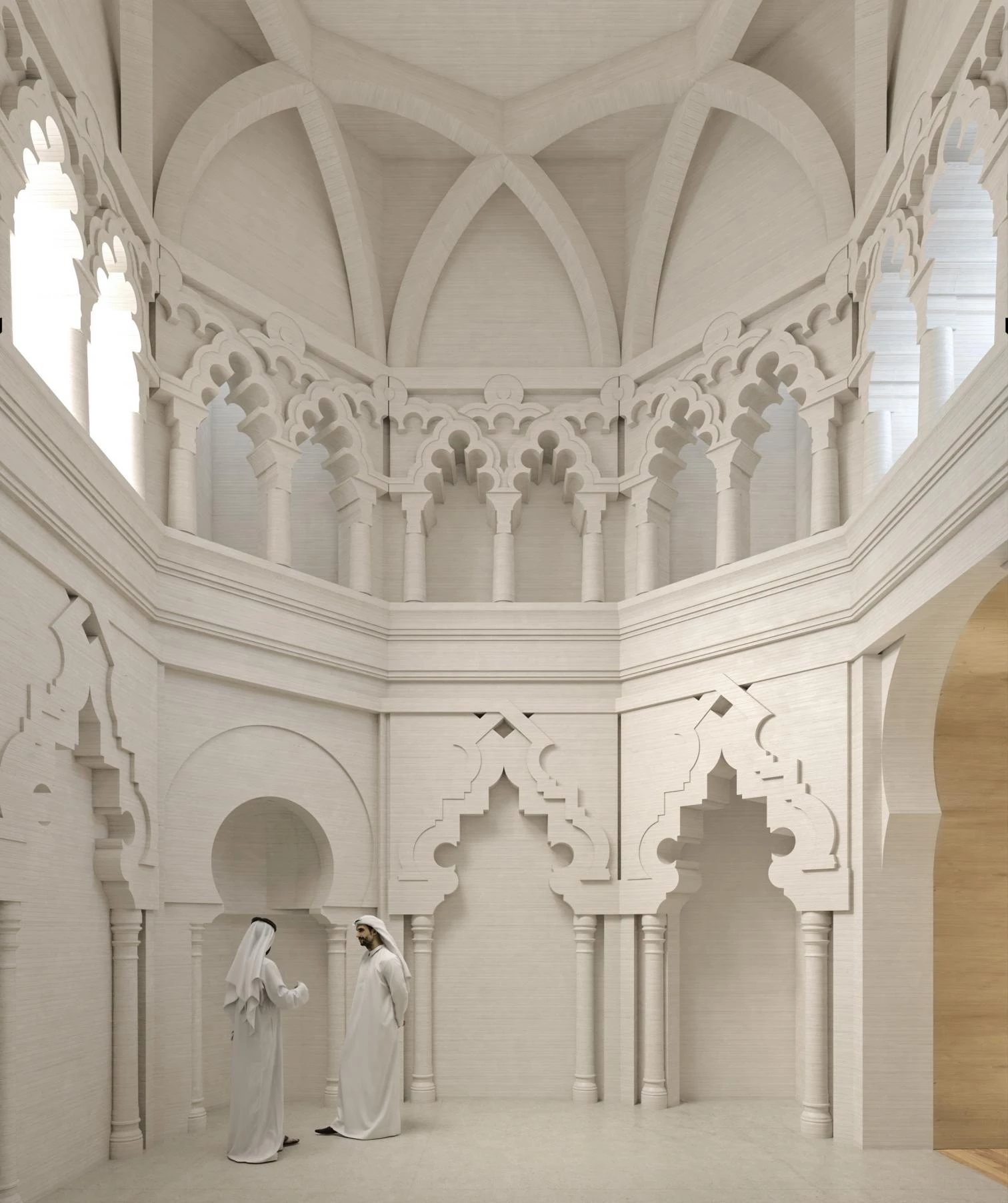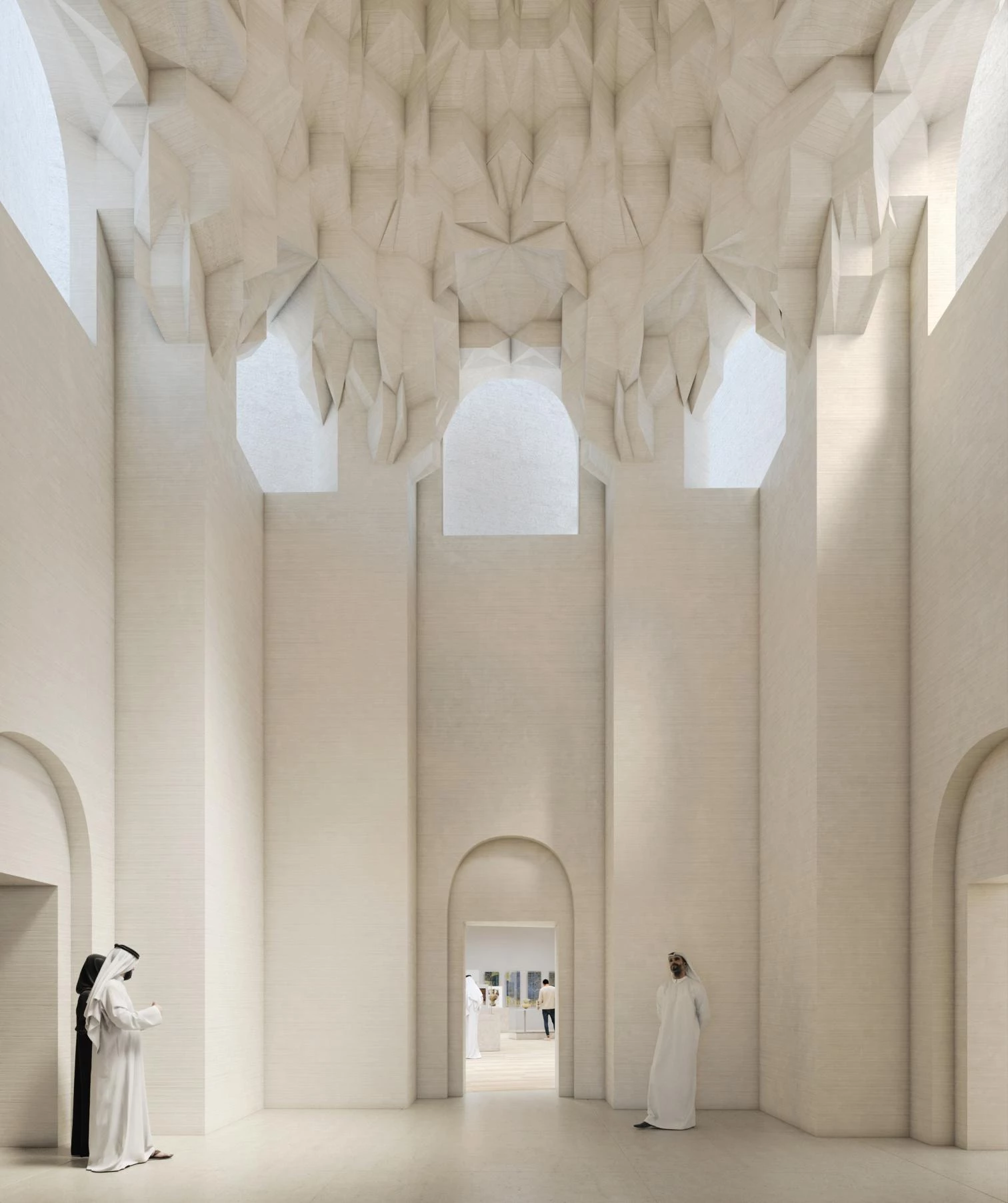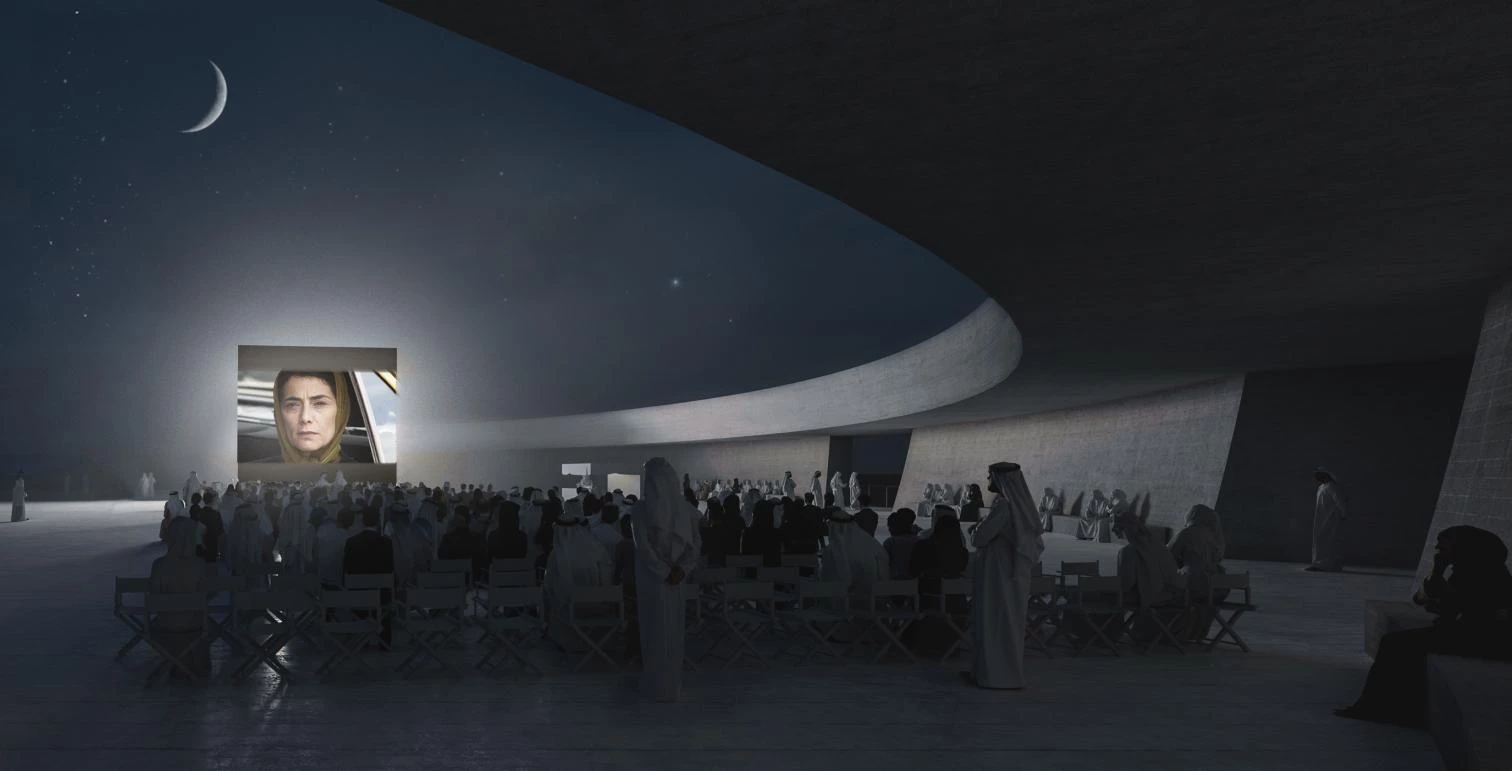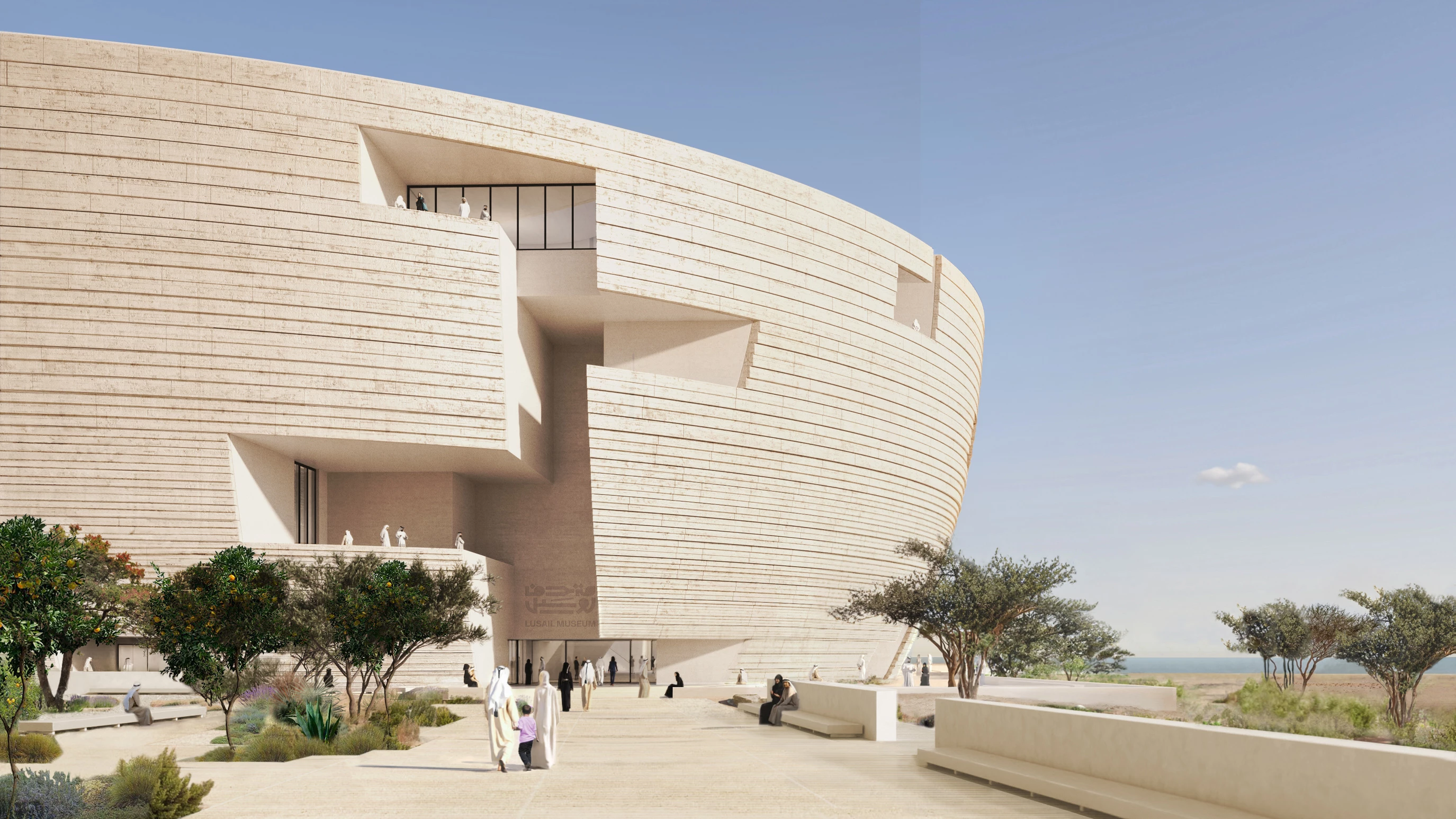Lusail Museum
Herzog & de Meuron- Type Museum Culture / Leisure
- Material Concrete
- City Lusail
- Country Qatar
Three intersecting spheres form and carve the building, breaking it up into two parts: one is like a full moon and other like a crescent moon wrapped around it. That is the art museum that Herzog & de Meuron designed for the art and culture institution Qatar Museums on Al Maha Island in the city of Lusail, one of the main venues of the FIFA World Cup of 2022.
Deep cuts and punctures on the facade’s wrinkled concrete create recessed windows and entry points that protect the interior from excessive direct sunlight while letting visitors stop and enjoy views of the sea and the city. The double curvature derived from the spheres generate an indoor boulevard which, shaped like a half-moon and skylit from above, connects the entrances to the central foyer and also to the library, the auditorium, the store, the café, and the prayer space. A rooftop terrace crowns it all.
The interior design is like a souk in vertical layers, with different spaces and uses scattered within the museum’s main volume, offering a journey similar to exploring a miniature city, contained within a single building, that harbors a major collection of Orientalist art. A sculptural central staircase organizes the spaces, where materials including wood, textiles, metal accents, and ceramic tiles are interspersed.
On the upper level, four galleries feature abstract replicas of four historic domes, including those over Murad III’s bedroom in Istanbul’s Topkapi Palace (1579), the Jameh Mosque in Natanz (1320), the ablution fountain in the courtyard of the Ibn Tulun Mosque in Cairo (1296), and the Aljafería Palace in Zaragoza (1050). The different geometries and ornamentations have to do with the historical and geographical context. Pendentives, ribbed vaults, stalactite vaults, and corner friezes define the typologies of the selected domes. Completion of construction is programmed for 2029.
